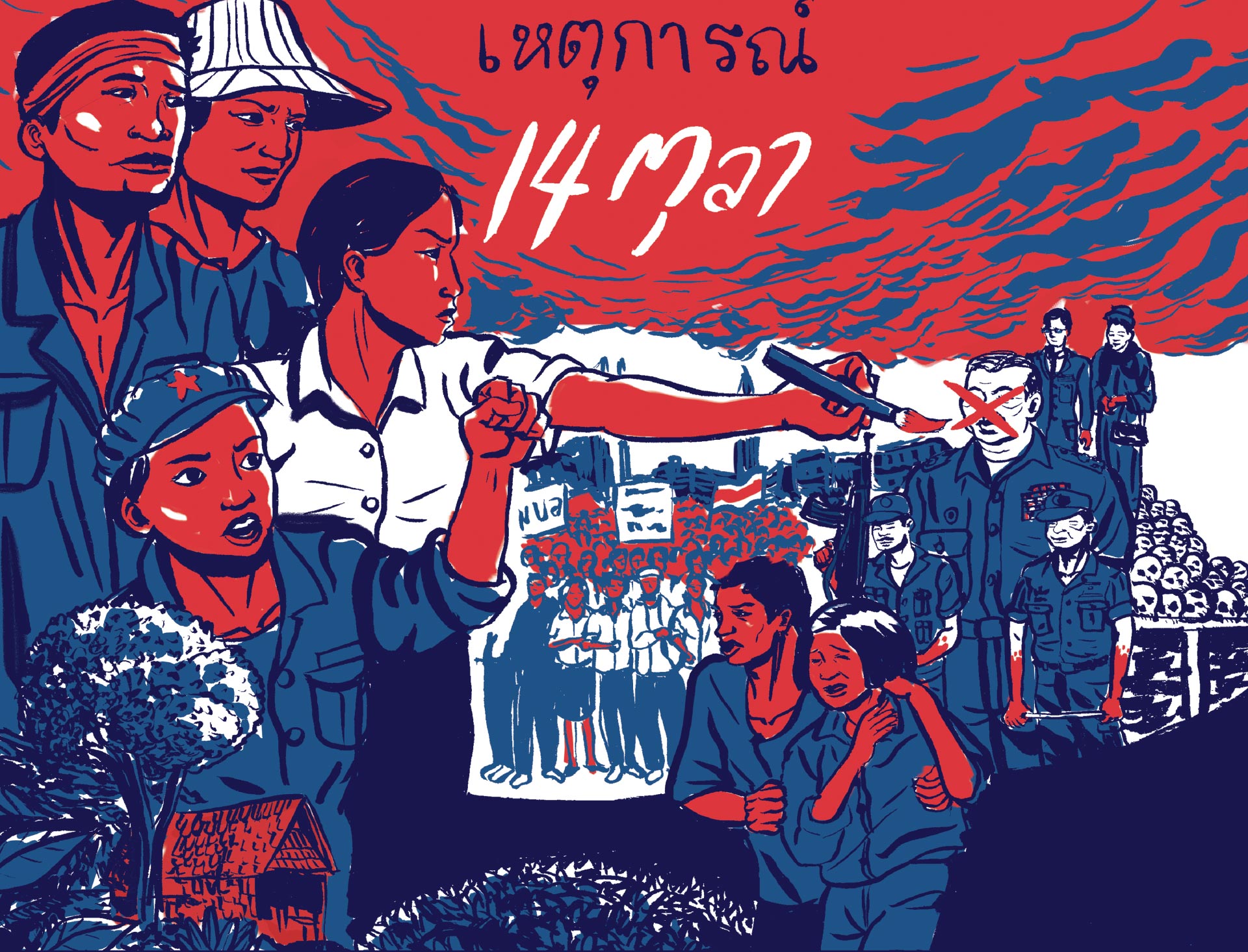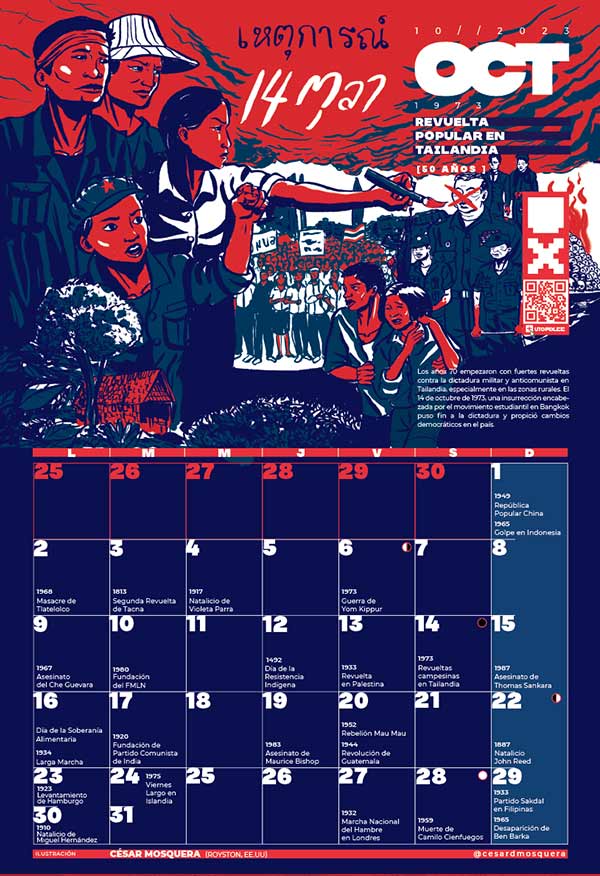ESP – ENG

In the early 1970s, Thailand was a deeply unequal and troubled country. Although formally a monarchy, it had been ruled by a military and anti-communist dictatorship since the 1930s. The incumbent leader was Thanom Kittikachorn, strongly supported by the United States for backing its war in Vietnam.
Opposition to the dictatorship began to grow in the rural areas, especially in the north of the country. Indebted and subjected to unfair rice crop prices, peasant families began to organize to fight against land concentration and high taxes. Rejecting the authority of the Thai state, they succeeded in establishing an autonomous zone with better conditions for production.
The struggle against the Thanom regime spread to the national scale thanks to the student movement, which after contact with the rural reality had become aware of the living conditions of the majority.
Although the security forces sought to suppress the protests, now concentrated in the capital Bangkok, they only succeeded in getting more and more people to join in. The turning point came on October 14, 1973, when a police massacre resulted in 75 dead and hundreds injured. Mass ensuing mobilizations led to Thanom’s resignation.
The popular victory paved the way for elections and a new constitution. However, U.S. influence, anti-communist propaganda and the lack of radicalization of the student movement hampered democratic advances, leaving the privileges of the wealthy classes untouched. In 1976 a dictatorial and anti-communist regime returned to power.

Click here to download the printable version of the calendar and hang it on your wall.
Text: Ricardo Vaz. Illustration: César Mosquera.